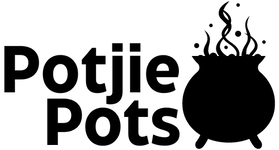What is a Potjie Pot?
If you’re looking for a cooking tradition that combines history, flavor, and a dash of mystery, look no further than the potjie pot. Pronounced “poi-key,” this traditional cooking pot has been around since the 1500s and remains a staple of cast iron cookware today. Whether you’re whipping up a hearty stew over an open flame or experimenting with potjiekos, the potjie pot is an essential tool for any culinary enthusiast who appreciates the art of slow cooking.A Cast Iron Legacy Dating Back to the Iron Age
The potjie pot has deep roots in history, dating back to the Iron Age when humans first learned to cast iron into various shapes for practical purposes. During this time, these three-legged, round-bellied pots became a favorite with villagers to create a flavorful meal from whatever meat and vegetables were on hand.
But despite the dark allure, the potjie pot proved its worth as a reliable and versatile cooking pot. Its design was perfect for use over an open fire, making it a go-to choice for adventurers and explorers in the mid-1600s. When Dutch settlers brought these pots to Africa, the local tribes quickly saw the benefits. They traded hides and other commodities to replace their clay pots with these durable, cast iron pots. In African cultures, the potjie became known as "Putu pots," often used to cook cornmeal, and the tradition has carried on ever since.
The Potjie Pot: A Symbol of Tradition and Practicality
The potjie pot has retained its original shape and design over the centuries, a testament to its practicality and durability. Modern cast iron cookware technology has only improved upon these age-old features, making the potjie pot as popular today as it was hundreds of years ago. Whether you’re using it for potjiekos, bread baking, or simply simmering a stew, this pot is built to last.
One of the standout features of a potjie pot is its unique pot-belly shape, which significantly enhances its heat distribution and retention qualities. The rounded, belly-like design allows heat to circulate evenly throughout the pot, ensuring that every ingredient is cooked to perfection, whether simmering slowly over an open flame or a modern heat source. This shape also contributes to the pot’s exceptional heat retention, allowing food to stay warm for longer periods without the need for constant reheating. The thick, cast-iron walls of the potjie further aid in maintaining a consistent temperature, making it ideal for slow-cooked dishes like potjiekos, where even heat and prolonged cooking are key to developing deep, rich flavors.
Speaking of potjiekos, this traditional dish has an intriguing backstory. It all started during the war between the Netherlands and Spain (1566-1648), when the townspeople of Leyden were under siege and had to pool their meager food supplies into a communal pot to survive. This humble “hutspot” (hodgepodge) was the ancestor of potjiekos, which made its way to Africa with the Dutch settlers in 1652. Over time, new spices and herbs brought to Africa by the Dutch East India Company transformed potjiekos into a unique and flavorful cuisine that’s robust, healthy, and deeply satisfying.
Potjiekos: A Flavorful, Social Experience
Cooking potjiekos in a potjie pot isn’t just about the food—it’s about the experience. This dish is as much about gathering good friends around a warm fire as it is about the rich, flavorful stew simmering away inside the pot. There’s something incredibly satisfying about the slow-cooked flavors, the aromas wafting through the air, and the stories shared as the potjie works its magic.
One of the secrets behind potjiekos is the cast iron cookware itself. The pores in the cast iron capture the flavors of past meals, gradually releasing them into each new dish as the metal heats up. This means that every potjie gets better with age, and most potjiekos taste even more amazing the next day after the flavors have had time to meld together.
Embrace the Tradition of the Potjie Pot
In today’s world, where fast food and quick meals are the norm, there’s something truly special about slowing down and embracing the tradition of cooking with a potjie pot. Whether you’re new to cast iron cookware or a seasoned pro, the potjie offers an unmatched combination of history, flavor, and community. So grab your potjie pot, gather your friends, and enjoy the timeless experience of cooking over an open fire—just like they did centuries ago.
Shop our full range of traditional 3-legged potjie pots as well as the modern flat bottom potjie for today's grills and electric ranges at PotjePots.com

